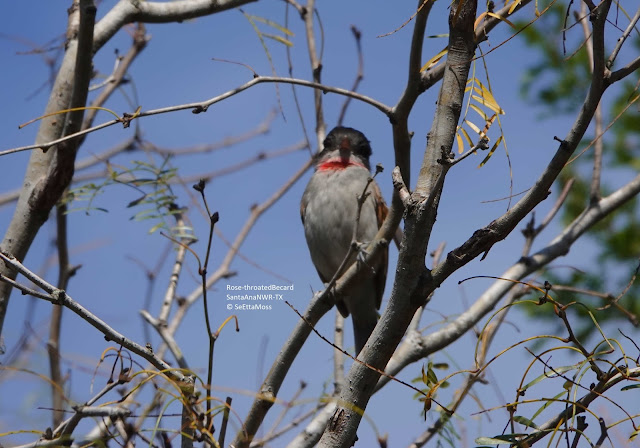More Blue Bunting with video clip

I enjoy watching birds of species that I am not familiar with so returned to Quinta Mazatlan this afternoon to look for the rare Blue Bunting again. It has continued to be seen most often at their amphitheater feeders and I waited there. When I saw it last week I thought I heard it call before it came into view so I was delighted to hear it call and a few minutes later it came in the opposite side of the feeders from where I sat and only stayed a short time so I missed it. Later I was much luckier. Again I heard it call and a couple minutes later it flew onto the top of a brush pile but quickly flew down and went back into the vegetation. I did pick it up about a foot or so back in the plumaged where it sat quietly for several minutes before walking around between the brush pile and vegetation then disappearing for several more minutes. Then it flew up to the wood feeder and chowed down on bird seed (looks like it ate millet) as shown in the video clip and did so for almost 15 m...

